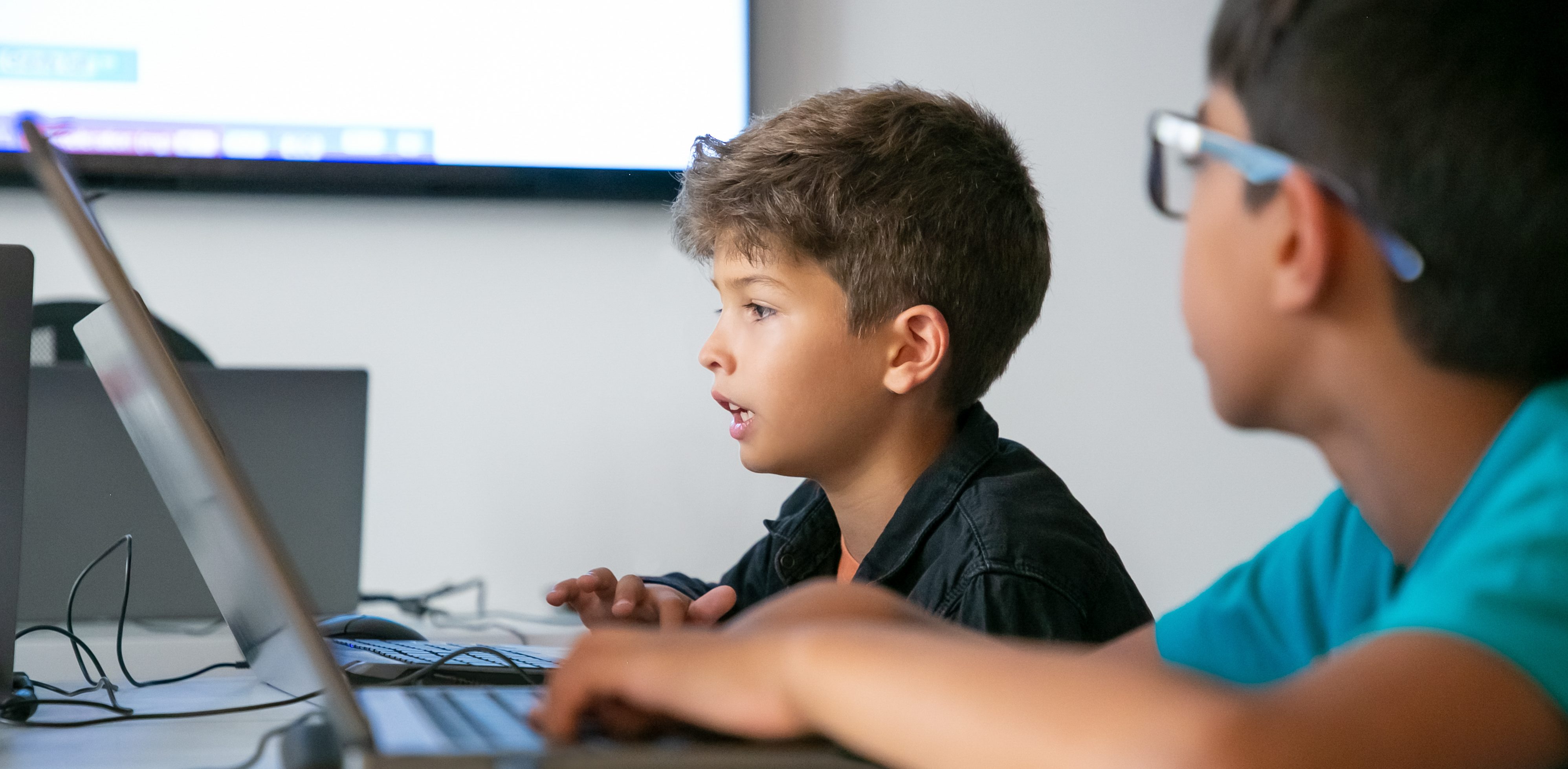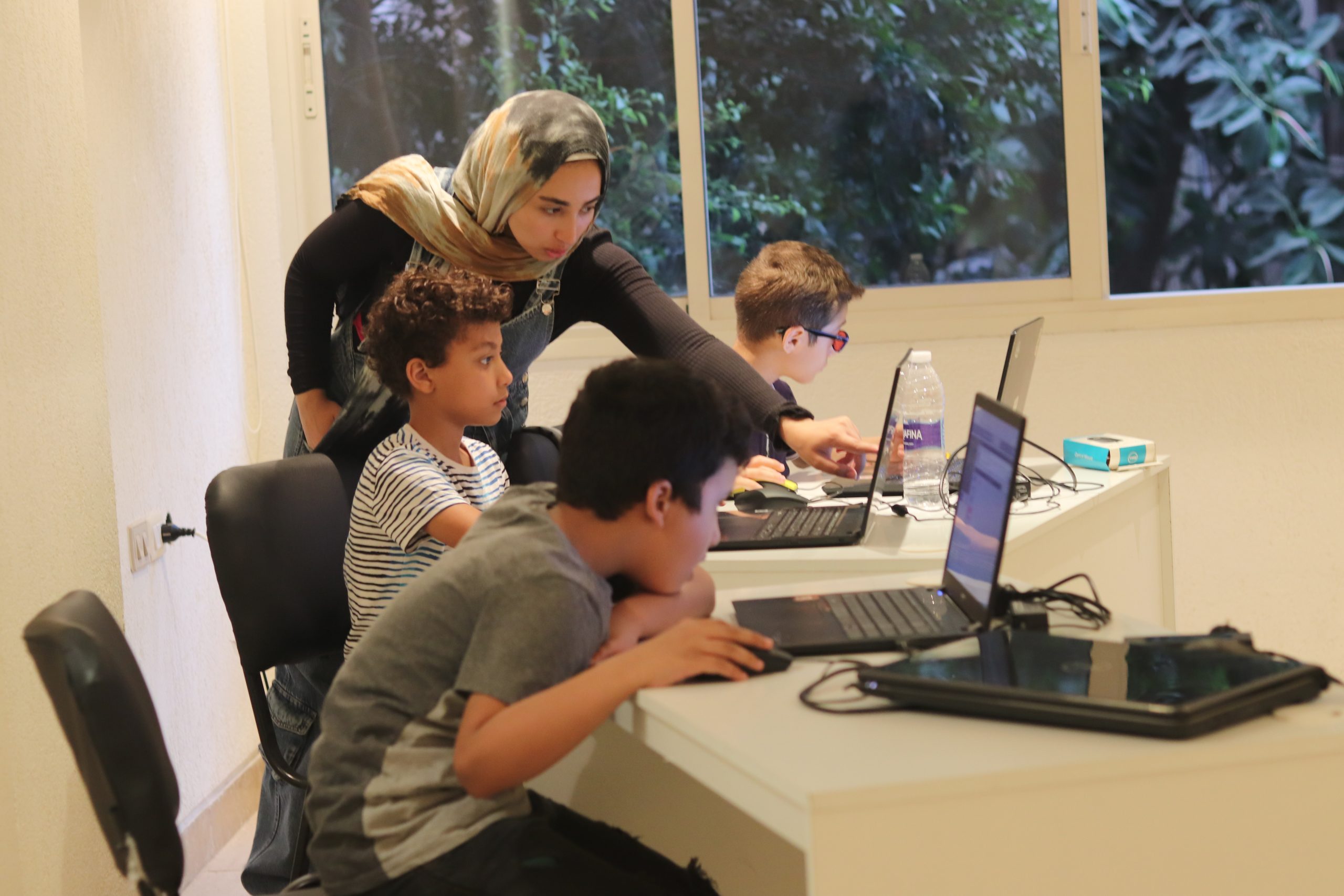Benefits of Coding: How Can Children Overcome Challenges Through Coding?

Educate children by utilizing the benefits of coding in order to help children learn more valuable life skills.
Have you encountered situations where the young ones have trouble dedicating themselves to their choices and remaining attentive as well as persistent to the task at hand?
Identifying what needs to be chosen and how to maintain a commitment to those choices is a crucial skill that needs to be developed from an early age, particularly in the event of the common challenge faced by parents or educators where youngsters struggle to commit and maintain focus on tasks.
Kids should understand the value of perseverance and focused effort, learning to stay committed rather than abandoning their task especially when facing difficulties during the completion process.
As they grow, kids require opportunities that allow them to practice making decisions and persevering in their chosen paths.
Hence, providing them with an environment that offers opportunities to foster and practice these skills will help children develop the resilience and determination necessary to persevere and overcome challenges.
The Power and Benefits of Coding to Help Children

Introducing coding at an early age provides kids with a unique and supportive environment to develop essential life skills, specifically perseverance, determination, long-term project management, and resilience to overcome challenges. This approach leverages the inherent nature of tasks, which often require sustained effort and problem-solving.
Cause and Effect in Coding Concept
Children should already begin to realize that each of their choices has long-term consequences. This awareness is a crucial aspect in shaping cognitive and emotional development from a young age.
Code learning will help children engage in projects that demand patience and persistence at the same time. Early coding concepts present the kids with the cause-and-effect relationship concept seeing that it is a clear and immediate example of how actions (writing code) lead to specific outcomes.
This case would develop logical reasoning skills where it allows them to connect events and understand how one action leads to another or affects the outcome. It enables them to recognize that certain errors are necessary learning experiences that need to be encountered to solve and make a perfect result.
Embracing Mistakes as Learning Opportunities in Coding
Moreover, having them know that mistakes are not the end of the world is important to make them prepared for future challenges and obstacles in their life. Experiences will help children to develop emotional strength and the ability to bounce back from setbacks.
In this term, errors or bugs frequently appear throughout the development process is just the beginning of a great debugging adventure. These glitches, flaws, or defects are an inherent part of programming and often emerge at various stages of writing and executing code.
Hence, the non-functional code the youth wrote assists them in understanding that these are natural occurrences and viewing them positively as stepping stones to greater comprehension and not as failures.
The journey constantly requires and encourages kids to be determined and engaged in deep analysis, resolve complications, and experiment with different solutions. This will make them aware of the process of hypotheses and give them confidence in conducting simple experiments in order to find a workable solution.
Read Our Other Articles:
How Should We Manage Gadget Addiction in Children?
Free Coding Class for Children in Orphanage
Real-World Application and Benefits of Coding Skills

Case Study: Children Animating a Virtual Character Through Coding
As an illustration, a child coding to animate the movement of a virtual character. However, there are unexpected results on the visual feedback after their commands are visually observed where the character glitches, misbehaves, or even makes an inhuman movement.
Children’s Problem-Solving in Actions
In order to solve the problem, the coder must perform the actions to find the mistakes and debug their code to make the movement of animation smoother and without errors.
During the process of identifying what went wrong and why it happened, the kid will practice and refine their analytical skills, and critical thinking. At the same time, consistent effort over time is required where they are required to be patient with themselves and maintain high self-motivation. Thus, this will help children develop those skills that are greatly needed throughout their lives later on
Building Confidence and Self-Esteem Through Coding Success
Furthermore, being able to find the error and successfully make the code prompt work as planned and without trouble would gradually boost the children’s confidence and self-esteem.
Having high belief in their capabilities encourages them which help children to be curious and attentive to tackle other more complex obstacles in the related aspect. These are considered transferable skills that beneficially have wide-ranging applications for the kids’ future and it is indeed beyond the environment of programming.
Conclusion

In conclusion, learning how to code is a positive way not to only make them more productive but also to have more applicable skills. Coding offers a unique and effective platform for the young ones to develop crucial life skills.
At once, it nurtures them to understand the cause-and-effect and to see any setback in their life not as a progress stopper but as a helpful signal to resolve the mistakes they face.
Throughout the process, the determination built will fortify children’s mindset always to overcome challenges in their future successful journey and allow them to be modern mini-Einsteins.
What to highlight is that these experiences are not only to enhance their programming abilities but also the benefits of coding to help children foster transferable skills that will benefit them in various aspects of life.
The reason is that by introducing coding at an early age creates a supportive environment for youngsters to build resilience, boost confidence, and cultivate a growth mindset, preparing them for future challenges both within and beyond the realm of technology.
Facilitate Youngers in a Supportive Educational Environment

Therefore, unlock your sons and daughters’ potential and nurture their problem-solving skills through our innovative and engaging coding courses.
Timedoor Academy, is your young ones’ gateway to the exciting world of technology! We offer IT education courses designed to empower the next bright and young generation. At Timedoor, we provide expert teachers with hands-on, interactive lessons that transform complex concepts into fun and engaging experiences that will help children open their paths.
Sign up for our free trial class and watch as your young one’s eyes light up with the thrill of discovery and innovation.
Visit Timedoor Academy‘s website for more information.
Frequent Asked Questions
Q: What is coding?
A: Coding is the process of translating ideas into instructions using a language that computers can understand and execute.
Q: Why children should learn to code?
A: It teaches and helps children with several valuable skills that are also applicable to other realms of life including problem-solving, persistence, decision-making, digital literacy, and many others.
Q: Do children can learn coding?
A: Yes, they can learn it. There are many engaging and enjoyable ways to make the course understandable for youngsters.
Q: Is coding really needed in the future?
A: It is one of the most valuable skills in the future seeing that there is a constant increase in the demand for an individual to be technology-dependent.
Q: At what age should a kid start learning to code?
A: There are several reliable sources stating that it is recommended to begin learning to code at 5-6 years.



